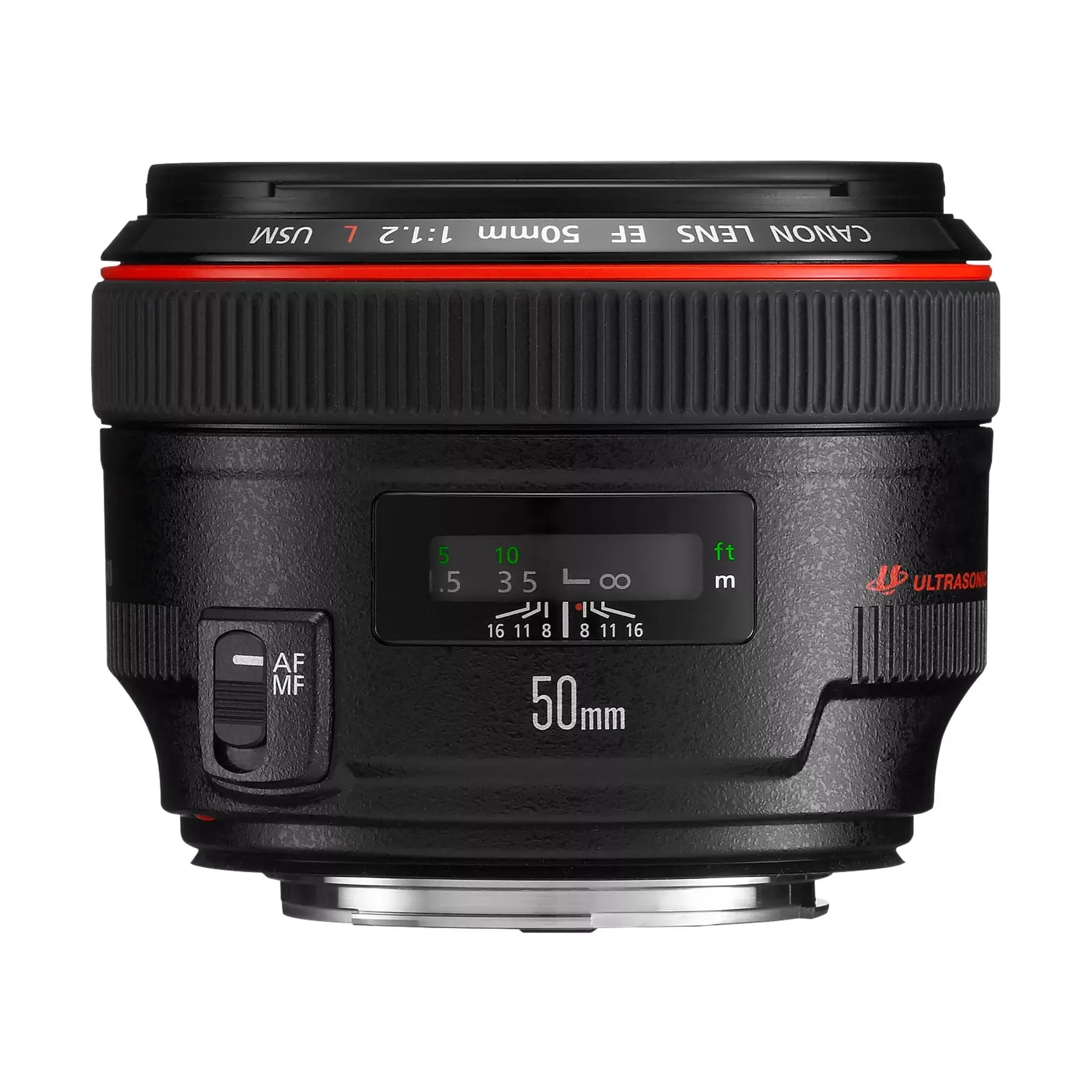Product Description
Canon EF 50mm f/1.2L USM Lens
Discover the pinnacle of precision optics with the Canon EF 50mm f/1.2L USM Lens, part of Canon's esteemed L-series. This lens combines unparalleled image quality with robust construction, designed to excel in professional photography environments.

Key Features:
-
Exceptional Optics: Sets the standard for precision optics with Canon's highest L-series standards, delivering superior image performance and durability against dust and moisture.
-
Large f/1.2 Aperture: The large maximum aperture enables outstanding speed, perfect for low-light conditions and achieving precise depth-of-field control without relying on flash.
-
Beautiful Background Bokeh: Features a circular barrel aperture that enhances background bokeh, ideal for isolating subjects and creating captivating portraits with smooth, even blur transitions.
-
Fast, Quiet Autofocus: Equipped with a Ring-type USM (Ultrasonic Motor) that provides rapid autofocus with virtually silent operation. Enhanced by a high-speed CPU and advanced AF algorithm for swift, accurate focusing. Enjoy full-time electronic manual focus override without switching out of AF mode.
-
Super Spectra Coatings: Incorporates Super Spectra lens coatings and precise lens element shaping to suppress flare and ghosting, ensuring optimal image clarity and true colour balance even in challenging lighting conditions.
-
E-TTL II Compatibility: Passes distance information to the E-TTL II flash system on compatible EOS cameras, ensuring precise and consistent flash metering.
-
Included Accessories: Comes complete with a cylindrical lens hood for shielding from stray light and a soft case for convenient storage and protection.

Designed for Excellence
The Canon EF 50mm f/1.2L USM Lens epitomizes the blend of cutting-edge optics and durable construction required by professionals. Whether capturing portraits, weddings, or street scenes, its superior performance and reliability make it an essential tool for discerning photographers.

Unlock Creative Potential
Experience the unparalleled image quality and versatility of the Canon EF 50mm f/1.2L USM Lens. From intimate portraits to detailed landscapes, its exceptional optics and wide aperture empower you to push creative boundaries and capture stunning, high-fidelity images.

Perfect Your Craft
Elevate your photography with the Canon EF 50mm f/1.2L USM Lens – where precision meets performance. Ideal for professionals seeking uncompromising quality and reliability in every shot.

Explore More
Discover the full capabilities of the Canon EF 50mm f/1.2L USM Lens and elevate your photography to new heights.
For full specifications click Here
Try The Kit - Canon Test Drive

Canon Test Drive – Try Before You Buy with Free Next Day Delivery
Test selected Canon gear with a 48-hour free trial or hire for up to 7 days at a low cost. Book anytime via the 24/7 live system.
How it works:
-
Book your kit – Choose dates and reserve online.
-
Pay a refundable deposit – Fully refunded upon safe return.
-
Fast delivery – Get your gear quickly and securely.
-
Easy returns – Use pre-paid packaging for simple drop-off or collection.
Visit https://testdrive.trythekit.com to book yours now.
Payment & Security
Your payment information is processed securely. We do not store credit card details nor have access to your credit card information.


















